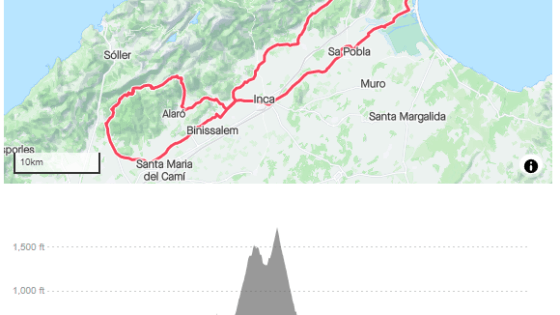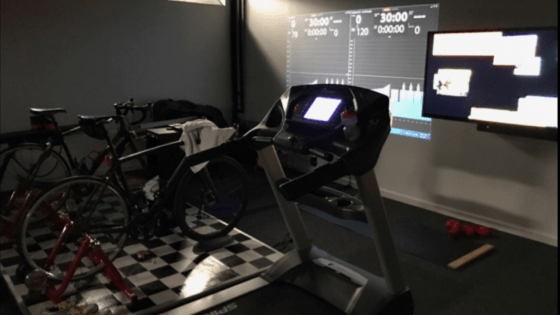In Part I we introduced you to the principle that performance fitness is in the muscles, not in the cardiovascular system. Now we would like to introduce you to Return on Investment (ROI) and the Principle of Specificity, Endurance Nation’s “do-not-pass-go” concepts for the age-group athlete living and working in the real world.
Return on Investment (ROI)
Return on Investment is the rate of return, on race day, for every training minute spent.
Just for a second let’s forget all this training/exercise physiology mumbo-jumbo. Let’s talk about the real world; your reality as an age-grouper living in an age grouper world. It’s a busy place! Between family, work, a personal life outside of training, family, and…family…your weekly time-pie is cut into many slices. Training is just one of those slices and, we feel, relatively unimportant in the grand scheme of things.
As age-group athletes you owe it to all of the very important pie slices in your life to consider the rate of return on race day for each training minute spent. Dads, when you’re walking your daughter down the aisle on her wedding day, are you going to regret not spending more time in the gym trying to improve your half Ironman® bike split? Moms? We hope not! As coaches completely focused on the R.O.I. of each training session and totally dialed into helping you achieve the maximum results with a minimum of time invested, we have concluded that sport-specific activities are the answer and the non-sport-specific stuff gets tossed first.
The Principle of Specificity
The Principle of Specificity states that the benefits that you get from a particular type of training are very specific to the type of activity that you performed to get those benefits. In other words, if you want to get good at a thing, do that thing.
Certain movement patterns activate specific muscles. For example, cycling activates the muscles of the quadriceps and the soleus. Most importantly, while cycling these muscles, and many, many others, all work in concert together (firing patterns, joint angles, rate of firing, etc) to create the very sport-specific act of pedaling a bike. There is no better way to force these cycling muscles to become better at pedaling a bike than by…pedaling a bike.
Invest Your Time Wisely
Traditional triathlon training says that you should include a period of strength training. The idea is that the strength you gain by pushing up a leg press will be converted, at some point in the season, to pushing pedals harder and faster or running faster. In other words, we spend a lot of time doing one thing (packing a bag, driving to the gym, lifting, showering, re-packing, and driving to work/home/etc.) in the hopes that it will eventually help us do another thing, running or riding a bike, better. However, what you’ve really done, by going to the gym two hours a week and pushing up weight on the leg press, is made your legs very good at pushing up weight on the leg press.
Endurance athletes are told to strength train because it will either (A) make you stronger or (B) help prevent injuries. If our ultimate goals are to push pedals harder/faster, to run faster, and to become more efficient and competent at both, shouldn’t you be out there on the road instead? The best, most time efficient machine for improving cycling is your bike and, with an additional two hours of cycling a week vs going to the gym, you’ll increase cycling volume by about 30%. Now that is a significant change that will improve your ability TO RIDE A BIKE! And if it’s winter time, then go one better and don’t ride your bike an additional two hours. We believe you should sleep in, bank some breakfast time with the kids, and in general avoid a volume-is-the-answer focus when you are months and months away from your goal races.
Force is Not Your Limiter
The fact is that endurance athletes are simply not limited by the amount of force they can produce. Let’s examine the force required to pedal a bike. Let’s say you’re on a three-mile hill at 10% grade. You’re in the lowest gear, at about 50 rpm, and the hill takes about 30 minutes to climb. So 30 minutes’ x 50 rpm = 1,500 pedal revolutions. If you went to the gym and put a weight on the leg press that you could lift 1,500 times in 30 minutes, how heavy would that weight be? More importantly, how strong would you need to be lift this weight 1,500 times? Any endurance activity is, by definition, one you do for a long time. Because of this, the force requirements of endurance activities are extremely low compared to the traditional weight-training movement.
That said, we realize that strength training has general health benefits for all of us, particularly for those over 40 years old. However, we are speaking as triathlon coaches with the goal of maximizing your triathlon potential, not as health care professionals. You’ve asked us to invest your time to achieve the highest triathlon race day ROI. Our experience, and the science, says that the best investment of your time is to actually do what it is you are trying to get better at, not do another thing because you hope the benefits will transfer.
If you are recovering from an injury or just looking for general health benefits, we believe you should:
- Consult with your physician to determine what strength training is appropriate for you.
- Keep these activities as time efficient as possible.
- Take care to minimize their impact on sport-specific activities.
In summary, if you want to weight lift or cross-train this Winter, don’t do it because you are hoping to be a better triathlete. Do it because you enjoy it, because it keeps you active and fit, and because it fits into your time-limited winter season. Most importantly, we encourage you to carefully consider the race day Return On Investment of every training minute spent, making your training as efficient and as results-focused as possible.
In the next installment of the series, we’ll discuss how we frame a season of Endurance Nation training: Fast then Far.




Deirdre Robbins
I was just wondering how much time I should be spending doing trx and this answered it all for me,It makes perfect sense.Thank you for the great information,I feel so much bettrer now because I was trying to figure out how to get all the workouts in without training twice a day,or have 8 days in a week.